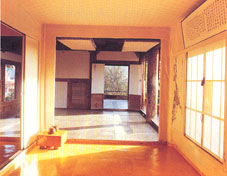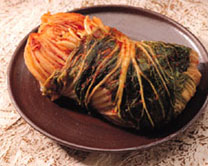| |
|
Sense of Seniority |
Although the traditional Confucian social structure is changing, it is still prevalent in Korea. Age or seniority is all-important and juniors are expected to follow the wishes of their elders without question.
Therefore, people often ask your age and sometimes your marital status (interestingly, no matter how old you are, at least among family members, you cannot be regarded as an adult if you are not married) to find out their position relative to you. These questions are not meant to intrude on your privacy and Koreans will not be offended if you do not answer. |
Names |

|
|
| The majority of Koreans have family names within one of a small set: Kim (about 21% of all Koreans), Yi (or Lee or Rhee, 14%), Park (or Pak, 8%), Choi (or Choe), Jeong (or Chung), Jang (or Chang), Han, Lim, etc. A Korean name consists of a family name, in almost every case one syllable, plus a given name usually of two syllables. The family name comes first. A Korean woman does not take her husband's family name, but their children take their father's family name. |
Body Language |
Koreans often greet with a slight bow and would not necessarily shake hands or kiss on the cheeks.
When you beckon to a person, do so with your palm down, then flutter your hand up and down with your fingers toughing together. It is not polite to beckon with your palm up- especially using only one finger, because Koreans do that way only for dogs. |
Marriage |
 |
Koreans think marriage is the most important passage in one's life and a divorce is regarded as a disgrace not only for the couple but also for their families - even though the divorce rate is growing rapidly these days. Today's typical wedding ceremony is somewhat different from what it was in old times: first a Western-style ceremony is usually held at a wedding hall or a church with the bride wearing a wedding gown and the groom a tuxedo, then later in the day the bride and groom have a traditional ceremony at a different room in the venue, in colourful traditional customs. |
|
Jerye (Ancestral Memorial Rite) |

|
According to a traditional Korean belief, when people die, their spirits do not immediately depart; they stay with descendants for four generations. During this period the deceased are still regarded as family members and Korean reaffirm the relationship between ancestors and descendants through jerye on the special days like Seollal (Lunar New Year's Day) and Chuseok (Korean Thanksgiving Day), as well as on the anniversary the ancestors passed away. Koreans also believe that people can live well and happily thanks to benefits their ancestors bestow upon them.
|
|
Hanbok |
 |
The hanbok has been the Korean people's unique
traditional costumes for thousands of years. The beauty and grace of Korean culture can be seen in photographs of women dressed in the hanbok.
Before the arrival of Western-style clothing one hundred years ago, the hanbok was everyday attire. Men wore jeogori (Korean jackets) with baji (trousers) while women wore jeogori with chima (skirts). Today, the hanbok is worn on days of celebration such as weddings, Seollal (Lunar New Year's Day) or Chuseok (Korean Thanksgiving Day). |
Ondol |

|
Traditional Korean rooms have multiple functions. Rooms are not labelled or reserved for a specific purpose; there is no definite bedroom or dining room for example. Rather, tables and mats are brought in as needed. Most people sit and sleep on the floor on thick mats.
Underneath the floors are stone or concrete flues. |
| Traditionally hot air was vented through the flues to provide heat. Clay or cement would be placed over the stones to protect the residents from noxious gasses. This type of under floor heating is called "ondol." Nowadays hot water is piped through cement floors covered with linoleum. |
Korean Food |

|
For Koreans, a dinner table without kimchi is unthinkable. Kimjang is the age-old Korean practice of preparing winter kimchi, which has been passed down from generation to generation. Since very few vegetables are grown in the three or four winter months, kimjang takes place in early winter and provides what has become a staple food for Koreans. One custom that may catch you off guard is the way Koreans serve their meals. |
While Westerners may be accustomed to eating by courses, Koreans tend to serve the whole meal at once with many side dishes to choose from.
You are not expected to eat everything and there is likely too much for you to finish anyway. It does provide a perfect opportunity to sample however. Many of the dishes are communal so you can take a little at a time from several different dishes, as you like. Practice your chopsticks, it's fun and more convenient for this style of eating, but don't be afraid to request a fork if you can't handle them. Also, many Korean restaurants serve their meals on low tables requiring customers to sit on the floor. This can be difficult for many foreigners but most restaurants also have regular tables too.
Some even have low tables with holes in the floor underneath for foreigners to put their legs comfortably.
|
|
|
|
|

















